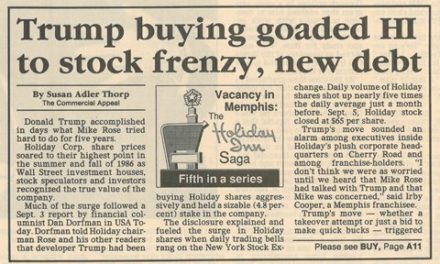From Forbes:
http://www.forbes.com/sites/erincarlyle/2014/09/18/forbes-opportunity-cities-19-places-where-it-may-be-easier-to-make-your-mark/?utm_source=Urbanful+Master+List&utm_campaign=15729e03f6-Daily_Subscribers_09/22/14&utm_medium=email&utm_term=0_fdf64fbc84-15729e03f6-197306877
Columbus, Ohio, was supposed to be just a temporary stop in 2006 on the way East for Josh and Niki Quinn, a place to save money and plan their new business. After years of living in Los Angeles, where they launched the wholesale wallets and accessories brand Maxine Dear, the couple had decided to open a retail shop, either in Philly or New York.
A few months into their Columbus camp-out, they decided to stay put. “As we started comparing Columbus and what it had to offer with the other cities, especially when cost got factored into it, we saw that we would be able to do something right away, and on a larger scale than we would in other cities on the East Coast,” says Josh Quinn.
In particular, the couple fell in love with the Short North neighborhood, with its High Street shopping corridor, cobblestone streets and historic homes. In 2007 the Quinns opened Tigertree, an apparel, gift and home furnishings shop. They started out in a Short North alleyway, and a year later moved onto a larger High Street location. Last year, the couple bought an 1890 home just blocks away from their shop, at a price Josh Quinn describes as “on the lower end” of the $250,000 to $400,000 range.
Quinn says they have no regrets about skipping the cooler East Coast cities for the Midwest. “I’ve never seen so much pride in a city. It’s kind of jarring, initially,” he says.
It’s not just the Short North neighborhood that makes Columbus a city of opportunity. A major factor is its very low cost of home ownership (the median sales price in the first quarter was $99,900). Amenities like Ohio State, a major university in the heart of downtown, a thriving arts and cultural scene, and a top-tier hospital make it a city where people can build a career as well as a rewarding life. Columbus lands the No. 1 spot on our inaugural list of Opportunity Cities, which we developed in collaboration with Sperling’s Best Places.
Unlike major cities like New York, Chicago and Los Angeles, where professionals in the early to middle phases of their careers (ages 25 to 39) might feel overwhelmed or lost in the shuffle, most of these cities are small enough that enterprising people can really make their mark. But they’re still large enough to offer amenities—museums, parks, and in many cases vibrant downtowns–that make for a high quality of life. Most importantly, because these places offer affordable housing, residents enjoy the opportunity to spend their energy getting creative, starting a company, or simply enjoying time off, without the pressure-cooker professional environment and stressfully high housing costs that are the hallmark of many of the nation’s biggest job centers.
 Behind the numbers
Behind the numbers
To find these Opportunity Cities, we scanned first for places with inexpensive home prices, using Sperling’s analysis of median home sales from from the first quarter of 2014, looking at all cities with a population over 150,000. Despite reports to the contrary, home ownership is still a goal for most Americans (even Millennials), and so we focused on places where that goal is more attainable. (Though not used for our ranking, rents in these cities are generally affordable as well.) Next, we looked at recent unemployment rates from the Bureau of Labor Statistics, also factoring in their direction year-over-year. Finally, using data from the Census’ American Community Survey from 2008 to 2012 (the most recent available), we factored in population growth overall, as well as among the 25-39-year-old cohort, a group we consider likely to move (or for that matter, stay put) for opportunities.
Our resulting list of Opportunity Cities focuses explicitly on core urban areas—cities—rather than the often-used Metropolitan Statistical Areas (cities and their surrounding suburbs). Downtowns are in vogue these days, with many cities making big efforts to revitalize urban cores and blighted neighborhoods. Still, many of the Opportunity Cities have higher rates of violent crime (murder, rape, assault) than average for America’s 300 largest cities. Perhaps for urban revivalists, crime rates aren’t the driving determinant of where to live—just look at Detroit.
19 Opportunity Cities: Places It May Be Easier To Make Your Mark
1. Columbus, Ohio
Population: 822,553
Median home sales price (Q1 2014): $99,900
Unemployment: 4.8%
Unemployment change July 2013-June 2014: -26.2%
Population growth 2008-2012: 9.4%
Pop. Age 25-39 (2012): 26.7%
Change in Pop. 25-39, 2010-2012: 1.3%
Violent crime (annual, per 100,000 people): 608.3
FORBES’ Business and Careers Rank: 30
“There are a number of things that we have to offer,” says Steven Schoney, director for the dept. of development for the City of Columbus. “No. 1 is that mix between employment opportunity, cost of living, and all the amenities of a big city. And so that means having a very vibrant cultural scene, and having a very young city. And part of that really is driven by having one of the largest universities in the country located right in the middle of the city.”
For the most part, the cities on our Opportunity Cities list fall into two categories: poster children for urban decline that are trying, with varying degrees of success, to turn a corner, where urban real estate can be had on the cheap; and Midwestern or Southern cities where real estate has always been cheap and civic efforts have focused on improving the array of amenities and the business climate. They represent a real range of risk—from places like Detroit, Buffalo, N.Y., and Rockford, Ill., still struggling to reinvent themselves in the wake of massive industrial decline, to thriving Columbus, where business opportunities abound and real estate is inexpensive, simply because it’s Ohio.
Our No. 1 city, Columbus, is home to a surprising number of major corporations whose employees represent a deep pool of potential customers for the Quinns, including billionaire Leslie Wexner’s collection of fashion brands (his L Brands–formerly The Limited–includes Victoria’s Secret and Bath & Body Works; Abercrombie & Fitch, a former Wexner brand, is also local), a 20,000-person JPMorgan Chase outpost, and the headquarters of Nationwide Insurance, Huntington Bank, as well as an outpost forAlliance Data Systems. It also has a healthy pipeline of venture funding for entrepreneurs, thanks to NCT Ventures as well as Drive Capital, a firm run by two former Silicon Valley VCs.
On the other end of the spectrum among our Opportunity Cities is Rockford (No. 6), which last year received the ignominious honor of being named by Forbes as one of America’s Most Miserable Cities. A century ago, the Illinois city was a hub of manufacturing, first of furniture, then of machine tools. Today the economy has shifted to advanced manufacturing in aerospace: United Technologies has a large presence, as does Woodward, which makes fuel systems for aircraft engines. But there is a mismatch between the education level of the local population and the city’s best jobs in engineering, and unemployment, though on the decline, is very high at 10.2%, second among our Opportunity Cities only to Detroit’s 16.4% (June 2014 figures). “A phrase that the city’s mayor has used is ‘we need jobs for the people we have,’ ” says Mike Schablaske, executive director of the nonprofit Transform Rockford. The city also has a high crime rate, with 1,367.8 violent crimes per 100,000 residents in 2012, well above the approximately 567 that was the average in 2012 for the nation’s 300 largest cities, What Rockford does have going for it is very cheap housing. The median price of homes sold in Rockford in the first quarter was $75,500. Buffalo, N.Y. (No. 5) is even lower ($65,000) and has a program that allows buyers to purchase homes for $1 if they restore and live in them for at least three years. Buffalo also offers an overall cost of living that we ranked best among the nation’s largest 100 MSAs. And of course we couldn’t leave out Detroit (No. 15), where home prices were the lowest in the first quarter of all the 164 cities we screened, at $43,000. Billionaire Dan Gilbert has invested some $1.3 billion in downtown real estate, hoping to help spark a turnaround in the city’s fortunes, and the low cost of living has drawn an influx of young creative types (though overall the city’s 25-39 population declined 3.6% from 2010-12 amid a general outflow of population).
Twenty years ago when Brian Mendelssohn came to Pittsburgh, No. 3 on our list, to study materials sciences and engineering at Carnegie-Mellon, the urban area looked a lot more like a bombed-out Detroit or a Rockford than a bustling Columbus. He fell in love with the city, and when he graduated the Miami native stayed. Every day on his bus ride to his job as a metals commodity trader, Mendelssohn would look at the rundown buildings. “Especially 10 years ago, there were a lot of empty buildings. I got really excited about them. It’s almost like they were Lego pieces; I kept dreaming about what I would want to do with them if I was in charge.”
After a couple years of this he bought his first building for $90,000, an old dilapidated house in the Lawrenceville neighborhood. He turned it into two condominiums, pouring in $60,000 and selling the condos for $108,000 and $118,000 each. Decent profit, big learning. He kept on building, and today focuses primarily on retail in Lawrenceville, where he owns a movie theater, beer store and the buildings that two restaurants (Tender Bar & Kitchen and Smoke Taqueria) are housed in. (He sold an indie card shop he built and ran.) “I came to the conclusion that in order to continue making this community interesting, I had to do stuff where I would want to move to the community. And if I lived here, what would make me excited about living here,” he says. “That’s my vision of how to create and redevelop a rundown part of town.”
Today the Lawrenceville neighborhood attracts hipsters, and its Butler Street is a thriving shopping and arts district. Kevin Acklin, chief of staff for Pittsburgh Mayor William Peduto, says the city has transformed itself from its industrial steel roots to an economy of “eds and meds,” with Carnegie Mellon, the University of Pittsburgh, the UPMC hospital system, and the High Mark and Alleghany hospitals. “Those are the steel rails in the 21st century here in Pittsburgh,” Acklin says. With a low median home price of $91,000 (Q1 2014), Pittsburgh still offers plenty of opportunity to people wanting to make it home.
Moving South, three cities in Texas make our list of Opportunity Cities: El Paso (No. 14), Lubbock (No. 7) and Amarillo (No. 16). North Carolina has two Opportunity Cities, Greensboro (No. 12) and Winston-Salem (No. 19). Ohio clocks in as the state with the most Opportunity Cities on our list with Columbus, Toledo (No. 4), Akron (No. 13), and Cincinnati (No. 18).
Check out our full list of Opportunity Cities.
See cities beyond the top 19 here, courtesy of Sperling’s Best Places.





Wow. Thanks for posting this Forbes article. I am bursting with civic pride!